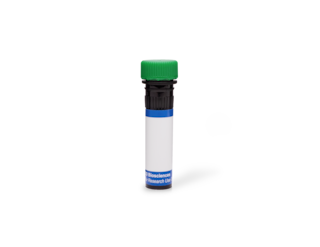-
Reagents
- Flow Cytometry Reagents
-
Western Blotting and Molecular Reagents
- Immunoassay Reagents
-
Single-Cell Multiomics Reagents
- BD® OMICS-Guard Sample Preservation Buffer
- BD® AbSeq Assay
- BD® Single-Cell Multiplexing Kit
- BD Rhapsody™ ATAC-Seq Assays
- BD Rhapsody™ Whole Transcriptome Analysis (WTA) Amplification Kit
- BD Rhapsody™ TCR/BCR Next Multiomic Assays
- BD Rhapsody™ Targeted mRNA Kits
- BD Rhapsody™ Accessory Kits
- BD® OMICS-One Protein Panels
-
Functional Assays
-
Microscopy and Imaging Reagents
-
Cell Preparation and Separation Reagents
-
- BD® OMICS-Guard Sample Preservation Buffer
- BD® AbSeq Assay
- BD® Single-Cell Multiplexing Kit
- BD Rhapsody™ ATAC-Seq Assays
- BD Rhapsody™ Whole Transcriptome Analysis (WTA) Amplification Kit
- BD Rhapsody™ TCR/BCR Next Multiomic Assays
- BD Rhapsody™ Targeted mRNA Kits
- BD Rhapsody™ Accessory Kits
- BD® OMICS-One Protein Panels
- Finland (English)
-
Change country/language
Old Browser
This page has been recently translated and is available in French now.
Looks like you're visiting us from United States.
Would you like to stay on the current country site or be switched to your country?
BD Transduction Laboratories™ Purified Mouse Anti-IP3R-3
Clone 2/IP3R-3 (RUO)






Western blot analysis of IP3R-3 on a HeLa cell lysate. Lane 1: 1:1000, lane 2: 1:2000, lane 3: 1:4000 dilution of the anti- IP3R-3 antibody.

Western blot analysis of IP3R-3 on a HeLa cell lysate. Lane 1: 1:1000, lane 2: 1:2000, lane 3: 1:4000 dilution of the anti- IP3R-3 antibody.

Immunofluorescence staining of MDCK cells (canine kidney; ATCC CCL-34).

Immunofluorescence staining of MDCK cells (canine kidney; ATCC CCL-34).






Regulatory Status Legend
Any use of products other than the permitted use without the express written authorization of Becton, Dickinson and Company is strictly prohibited.
Preparation And Storage
Product Notices
- Since applications vary, each investigator should titrate the reagent to obtain optimal results.
- Please refer to www.bdbiosciences.com/us/s/resources for technical protocols.
- Caution: Sodium azide yields highly toxic hydrazoic acid under acidic conditions. Dilute azide compounds in running water before discarding to avoid accumulation of potentially explosive deposits in plumbing.
- Source of all serum proteins is from USDA inspected abattoirs located in the United States.
Data Sheets
Companion Products


Inositol 1,4,5-triphosphate (IP3) functions as a second messenger for many hormones, growth factors, and neurotransmitters. IP3 causes the release of Ca2+ from intracellular stores by binding specific receptors that are coupled to Ca2+ channels. A number of studies have identified a family of at least four IP3 receptors (IP3R). The type III receptor (IP3R-3) has been isolated and characterized in human and rat. IP3 receptors are commonly localized in the endoplasmic reticulum, but have also been identified in the nucleus and the plasma membrane. Co-expression of different IP3 receptors is detected in most tissues and cell lines. Although these receptors appear to have a similar specificity for inositol phosphates, the different receptors have been reported to have different affinities for IP3 as follows: type II > type I > type III.
This antibody is routinely tested by western blot analysis. Other applications were tested at BD Biosciences Pharmingen during antibody development only or reported in the literature.
Development References (5)
-
Blondel O, Takeda J, Janssen H, Seino S, Bell GI. Sequence and functional characterization of a third inositol trisphosphate receptor subtype, IP3R-3, expressed in pancreatic islets, kidney, gastrointestinal tract, and other tissues. J Biol Chem. 1993; 268(15):11356-11363. (Biology). View Reference
-
Leite MF, Thrower EC, Echevarria W, et al. Nuclear and cytosolic calcium are regulated independently. Proc Natl Acad Sci U S A. 2003; 100(5):2975-2980. (Biology: Immunofluorescence, Western blot). View Reference
-
Maranto AR. Primary structure, ligand binding, and localization of the human type 3 inositol 1,4,5-trisphosphate receptor expressed in intestinal epithelium. J Biol Chem. 1994; 269(2):1222-1230. (Biology). View Reference
-
Pin CL, Rukstalis JM, Johnson C, Konieczny SF. The bHLH transcription factor Mist1 is required to maintain exocrine pancreas cell organization and acinar cell identity. J Cell Biol. 2001; 155(4):519-530. (Biology: Western blot). View Reference
-
Zanner R, Hapfelmeier G, Gratzl M, Prinz C. Intracellular signal transduction during gastrin-induced histamine secretion in rat gastric ECL cells. Am J Physiol Cell Physiol. 2002; 282(2):C374-C382. (Biology: Immunofluorescence). View Reference
Please refer to Support Documents for Quality Certificates
Global - Refer to manufacturer's instructions for use and related User Manuals and Technical data sheets before using this products as described
Comparisons, where applicable, are made against older BD Technology, manual methods or are general performance claims. Comparisons are not made against non-BD technologies, unless otherwise noted.
For Research Use Only. Not for use in diagnostic or therapeutic procedures.